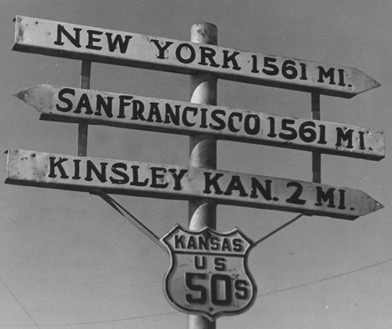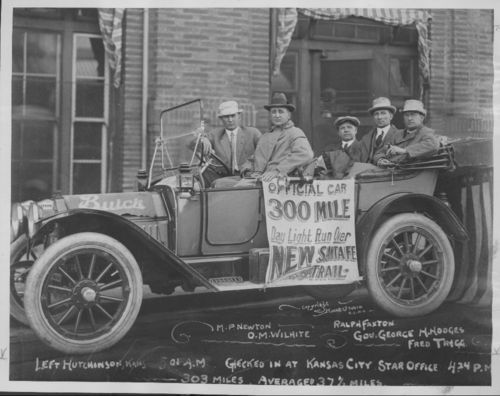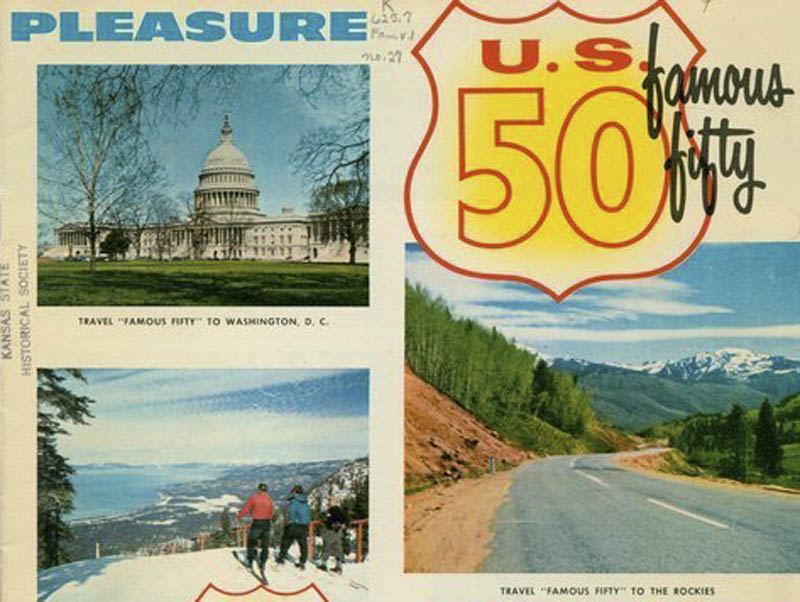Few states started with poorer roads than Kansas, with its colloquially-known two seasons of sand and mud. Kansans, dependent on the farm-to-market economic pipeline, overwhelmingly supported the national highway concept. The first wave of Kansan’s public enthusiasm centered around the construction of the “New Santa Fe Trail,” a highway roughly following the path of the historical Santa Fe Trail along the Arkansas River, and ultimately Highway 50’s route across the state.

On May 26, 1913, Kansas Governor George Hodges and a carload of Good Roads boosters took a much-celebrated road trip along the New Santa Fe Trail. The 303-mile drive across half the state was completed in just under 9½ hours, and demonstrated the values of speed and independence the new highway system offered to rural inhabitants who had spent generations navigating mud ruts. The road trip also began Kansans’ affinity for the route that became the state’s first paved border-to-border highway in the form of U.S. Highway 50 a decade later. The dedication of Kansas road boosters in stirring rural Kansans to adopt the highway ethic resulted in their local development of 2,500 miles of improved highways between 1909 and 1914, connecting thousands of farmers to urban markets and to the then-understood as inevitable network of national highways.


While Kansas led most other states in its highway enthusiasm, each state along Highway 50 maintained its own Highway 50 Association, private organizations serving to promote the highway, its expansion, and act in an advisory capacity to each state’s government with respect to routing decisions. The state associations unified as a national Highway 50 Federation in 1954. As the Good Roads movement had done a few decades prior, the Highway 50 Federation seized existing grassroots sentiments of emerging popular car culture, and promoted travel along Highway 50 using now-entrenched ideas of highways as value-generating networks of freedom and nationalism.
The Highway 50 Federation depicted U.S. 50 as the backbone of America, a “Central Pleasure Route” across the heart of the United States leading straight to the nation’s capital. In the late 1950’s to early 1960’s, the Federation went so far as to hold a series of popular beauty pageants across the 12-state corridor where young women competed for the title of “Miss U.S. Highway 50.” The Highway 50 pageants followed a globally emerging trend in the 1950’s and 60’s of small organizations generating publicity with niche beauty pageants, inspired by the decade’s creation of the Miss World, Miss Universe, and Miss International pageants which continue to this day.
